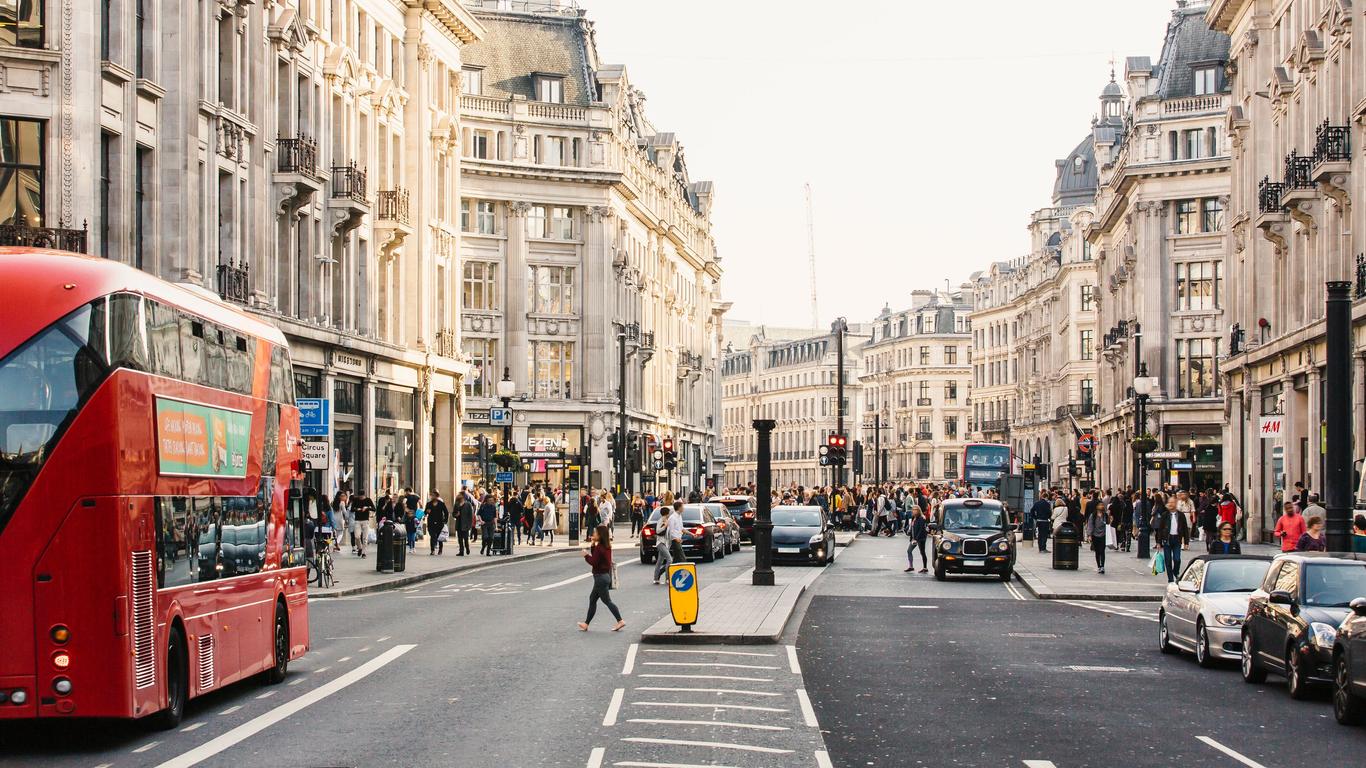Stretching from Waterloo Place through Piccadilly and Oxford Circuses to All Soul’s Church, Regent Street is an iconic shopping strip in London’s West End. It was laid out in 1825 by architect John Nash and named for George, the Prince Regent, who would go on to become King George IV.
Regent Street spans just over one kilometre and is lined with flagship designer stores, including Burberry, Karl Lagerfeld and COS. It’s also home to the first Apple Store in the United Kingdom, the famous five-storey toy giant Hamleys and the iconic London department store Liberty. The historic perfumery Penhaligon’s has its opulent headquarters here, selling not only colognes but also toiletries and candles, while Anthropologie offers vintage-inspired homewares and fashions in their plant-filled space. While most of the street’s original 19th century buildings have been replaced, All Soul’s Church still stands proudly in Langham Place at its northern end, designed by John Nash in Regency style and consecrated in 1824. Sharing Langham Place is the BBC’s headquarters at Broadcasting House, where numerous national radio stations are based, while the University of Westminster has been situated on Regent Street since 1838.
Regent Street can be accessed from Piccadilly Circus and Oxford Circus underground stations which connect with destinations across London. Numerous public buses also run along the street, and it’s within easy walking distance of Hyde Park to the west and Trafalgar Square to the south-east.
Regent Street was conceived in an attempt to establish order in London’s medieval streets, with Nash originally wanting a straight, Parisian-inspired boulevard. It was not possible due to land ownership issues, but the curved street which resulted was thought to act as a line separating the upper classes to the east from the working classes to the west.





